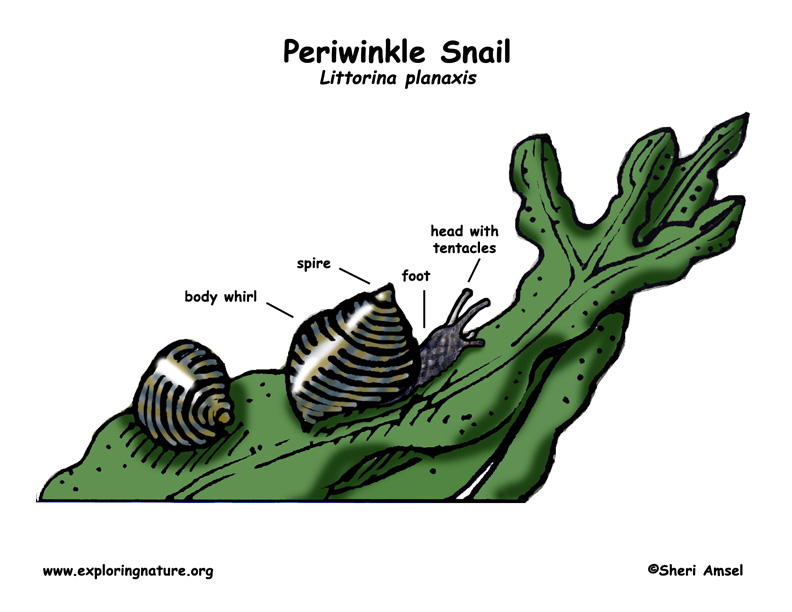

They are found on the coast from Alaska to Baja California.
They attach to docks, wooden pilings and rocky areas in bays and on shorelines.
They have a sharp structure in their mouth called a radula. It is rows of sharp, hooked teeth for scraping algal food off rocks. They can replace up to 7 rows of teeth in one day. They can close themselves into their shells using their tail to keep from drying out or protect themselves from predators. Their doorway out of their shell is called the operculum.
They travel up and down the rocks with the tide, crawling out of the tide pool at night and back in during the day. They hide at low tide in groups in cracks or crevices. They secrete a special mucus around the opening to their shell. This hardens, cementing them to the rocks. When they are hungry they eat away the hardened mucus and crawl around.
They scrape plant scum off the rocky surfaces with a special structure in their mouth called a radula.
Once a year, males find a female for mating. Females lay their eggs in a mucus bundle in tide pools. The larvae hatch and are washed out to sea to grow.
Kingdom: Animalia
Phylum: Mollusca
Class: Gastropoda
Order: Neotaenioglossa
Superfamily: Littorinoidea
Family: Littorinidae/Subfamily: Littorininae
Genus: Littorina
Species: L. planaxis
When you research information you must cite the reference. Citing for websites is different from citing from books, magazines and periodicals. The style of citing shown here is from the MLA Style Citations (Modern Language Association).
When citing a WEBSITE the general format is as follows.
Author Last Name, First Name(s). "Title: Subtitle of Part of Web Page, if appropriate." Title: Subtitle: Section of Page if appropriate. Sponsoring/Publishing Agency, If Given. Additional significant descriptive information. Date of Electronic Publication or other Date, such as Last Updated. Day Month Year of access < URL >.
Amsel, Sheri. "Periwinkle Snail" Exploring Nature Educational Resource ©2005-2024. December 13, 2024
< http://www.exploringnature.org/db/view/553 >


